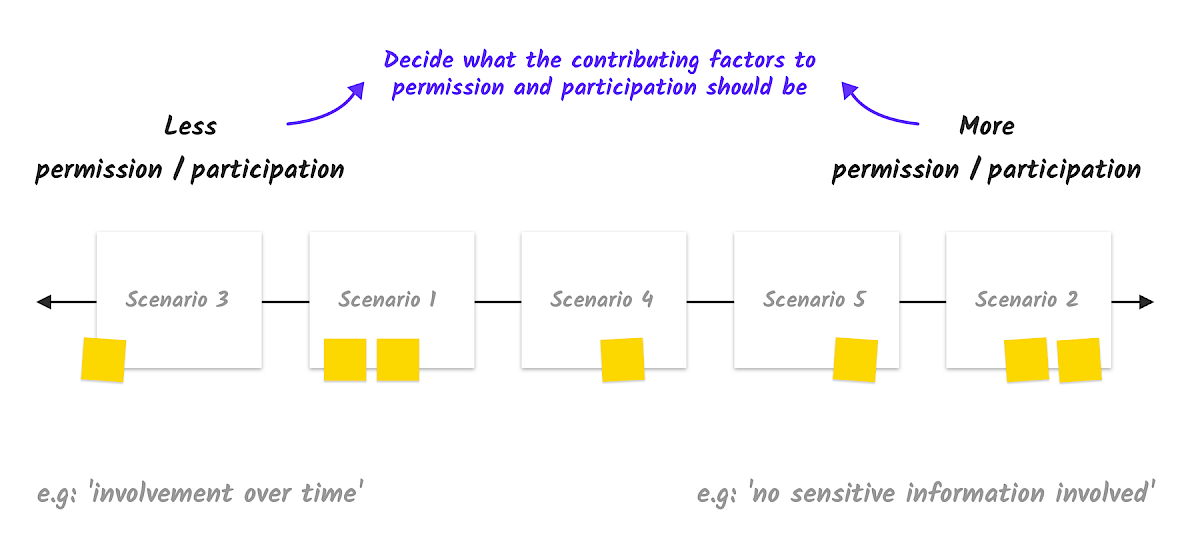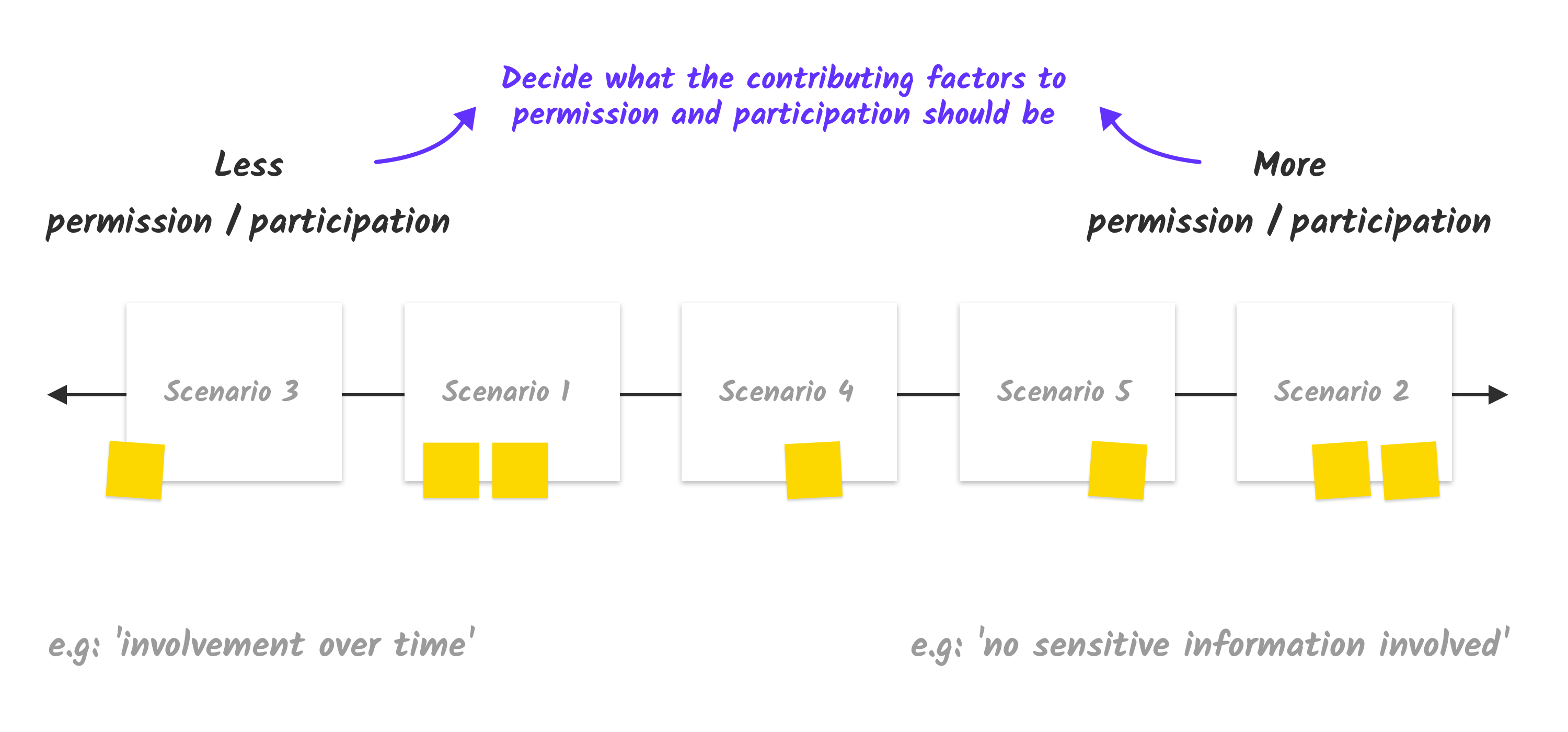Explore Permission Patterns
This exercise asks participants to consider a spectrum of recognisable offline scenarios in which permission is sought and given. The group is asked to analyse each scenario and then rank them on a scale, considering how people are solicited to, participate and give permission. What are the shared or unique criteria that underlie their participation?
What is it
In everyday life, there are moments where we give permission for other people and entities to access our personal information. People participate at the point of giving permission in different ways, much of it depending on the setting and the gravity of the situation and which varies, for instance, from office and building security environments to medical and financial interactions.
This exercise asks participants to consider a spectrum of recognisable offline scenarios in which permission is sought and given. The group is asked to analyse each scenario and then rank them on a scale, considering how people are solicited to, participate and give permission. What are the shared or unique criteria that underlie their participation?
After discussing where the group placed the scenarios on the scale and why, the exercise concludes by prompting them to re-assess their decision and draw comparisons between offline and online scenarios around permission, participation and consent.


How to do it
- Download and print the Participation Spectrum.
- Find a clean surface (e.g. whiteboard, flipchart) to work on. Write what the task entails at the top, as follows: “Decide what the contributing factors to permission and participation should be. Place the examples on this scale”.
- Draw a horizontal line across the middle. This will act as the scale the participants will use to decide where their examples go. On the left side of the line write “Less” and on the right side “More” and in the middle “people participating in the decision”.

- Ask the participants to pair up, and then hand out at least one participation and permission scenario to each pair.
- Explain what the exercise entails, as described in the "Overview" section above.
- Emphasise that it is up to the participants to discuss the main contributing factors to permission and participation for their example.
Each pair should have a discussion about what "permission" and “participation” means and where their scenario(s) fit on a scale of "less" and "more" permission and participation.
Introduce the scale you created, and tell the participants you will be asking them to place their scenarios on this scale, after they've shared their thoughts on the main contributing factors behind their decision (e.g. location, duration, sensitivity of information, importance of the decision / gravity of outcome).
Ask each pair to explain the major contributing factors behind their decision with regard to their level of permission and participation. Once they have considered all these points and articulated their thoughts, instruct them to place their example on the scale.
Ask participants to write on a Post-it note their major contributing factors to provide the reason why they placed their example where they did, and get them to stick the Post-it note on the example.

- Lead an open discussion around the decisions people have made. Select a few scenarios and ask each of the owners to report back what the major contributing factors were and the reason why they placed the example where they did.
- Invite the group to analyse their choices according to the choices other participants made. Get them to compare each other's decisions. What are the similarities or differences between the various factors and examples? Is there a reason why similar examples have been placed on different parts of the scale? Are the example placed at the extremes of the "more" and "less" scale justified in their position? What about those in the middle?
- The aim here is to open up discussion based on the contributing factors for participation and permission, also drawing on some of the complexities behind the scenarios. Ask whether they'd consider changing their decision in the light of the discussion. Depending on group sentiment, move the examples around as needed.
- Ask the group to reflect on these scenarios and online experience. Are there principles emerging from the discussion that can be applied? Can comparisons be drawn between offline and online scenarios around permission, participation and consent?



This tool and any associated downloadable assets are provided under a
Creative Commons Attribution-Share Alike CC BY-SA 4.0 International License.Related content
Preparation 15 mins
Delivery 15 mins
Preparation 30 mins
Delivery 15 mins